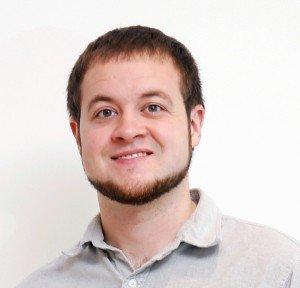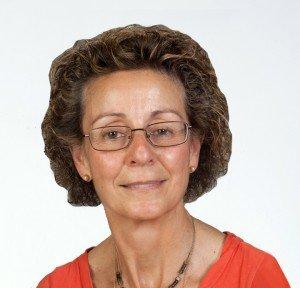Making good—actually, great—on a promise
The University’s The Promise Lives Campaign raised $500 million over eight years to support students, faculty, programs, outreach, and facilities.
By Jennifer Shutt Bowie BSJ ’94, MSC ’99, executive director, Advancement Communication & Marketing | November 18, 2015
Share:
The University’s The Promise Lives Campaign raised $500 million over eight years to support students, faculty, programs, outreach, and facilities, surpassing its goal by $50 million when the books closed in June.
outreach/programs
Bringing healthcare home
Ohio University extends beyond College Green. Campaign gifts helped extend OHIO’s footprint into central and northeast Ohio. The new Dublin Campus, which opened in 2014, is home to osteopathic medical students, future physician assistants, professional MBA students, and more.
Dorvan Byler, a second year osteopathic medical student, was one of the first 50 Dublin Campus students.
Motivated by his faith as a conservative Mennonite, Byler hopes “to do primary care in an urban setting for an underserved population. One of my dreams is to gather support from my faith community to offer care for free or at reduced cost to underinsured folks in an Ohio city.”
Byler earned the Heritage College Dublin Primary Care Scholarship, created during the campaign and helping him follow in the footsteps of his father, whose DO practice is in Mt. Eaton, a small town in Ohio’s Amish country.
The fifth of nine children, Byler says, “The debt load of a medical student is simply overwhelming at first glance. Of course, the expectation of a sizable salary one day makes the investment palatable, but realizing the amount of money I will be borrowing could be worth several houses is a little scary. Every dollar of scholarship money I have received has relieved me of some of the pressure that comes from loans and interest, and every dollar I will not have to repay after graduation will allow me to focus on fulfilling my dream of providing primary care for underserved populations.”
faculty/programs
Same coat, new mission
In a hospital, white coat = physician. In a laboratory, white coat = scientist. This fall OHIO’s new Translational Biomedical Sciences program welcomed its first four students—who train to wear that white coat as both physicians and scientists.
Sonsoles de Lacalle leads the program and oversees the Heritage College of Osteopathic Medicine’s dual-degree programs—collaborative programs that blend science and medicine.
“We need more healthcare providers because we are not reaching the population that needs care,” says de Lacalle, director of the Heritage College’s Office of Advanced Studies.
OHIO produces well-trained, compassionate physicians to serve communities, particularly in primary care. In 2015, 56 percent of the Heritage College’s graduating class matched to residencies in primary care.
“So, if what we need are clinicians, why even bother developing dual degree programs in general and the DO/Ph.D. in particular?” asks de Lacalle. “Well, most physicians are not scientists. They are not trained like scientists; they are trained to apply scientific knowledge to the care of their patients. However, the application of science to medicine is a difficult thing, one that necessitates basic scientists and clinicians, but the two of them exist in different worlds.”
de Lacalle’s work brings those worlds together. “Clinician-scientists represent an important element in bridging the gap between basic science and clinical science. … [They] are the essential conduit between laboratory and clinic.”
de Lacalle and her students benefit from serious financial support. “This money allows the program to encourage cross-disciplinary entrepreneurship by funding projects that students and faculty are passionate about,” she says. This includes research and student travel to conferences. “Most importantly, this money means that somebody believes in us. And I take that very seriously, and strive not just to not disappoint our funders, but to make them proud.”
facilities/programs/outreach
On the with show
After earning fine arts degrees from Otterbein University and the University of Miami, Lancaster native Victor Jones moved back home to care for his aging parents.
“While here I realized that there was a need for theater at (Ohio University Lancaster Campus), and I wanted to be the one to bring theater back to our campus,” he says. “I submitted my resume and was quickly hired on a trial basis to see if there was an interest at OUL. I’m happy to say that five-and-a-half years later the theater program continues to flourish.”
Artistic director and lecturer of theatre on the Lancaster Campus, Jones is benefitting from a fundraising effort to improve the Wagner Theatre, the campus’s 475-seat venue.
It’s located in Brasee Hall, which opened in 1968. Much of the theater’s equipment no longer meets industry standards. The Wagner Theater Improvement Campaign is changing that by supporting a multi-step renovation that includes enhancements to the sound and lighting design.
“I have to say the arts are an essential part of this community,” says Jones. The campus’s summer production of “ West Side Story had record attendance, which says so much about how theater and music are cherished at OUL and here in Lancaster. I know that the impact on the students, community members, and the audience is long-lasting.”
Productions aren’t slowing down during renovations. Jones is preparing a 2015-16 season that includes Neil Simon’s Barefoot in the Park ; A Charlie Brown Christmas , adapted by Eric Schaeffer from the TV special by Bill Melendez and Lee Mendelson and featuring Charles M. Schulz characters, and The 39 Steps adapted by Patrick Barlow, from the novel by John Buchan and made famous in film by Alfred Hitchcock.
“We are so appreciative of the funds given to the OUL Theatre Program and the Wagner Theatre renovation project,” says Jones. “The blessings that I have received at OUL are too numerous to mention. I have been embraced by the faculty, staff, and this community who are so passionate about the arts.”






